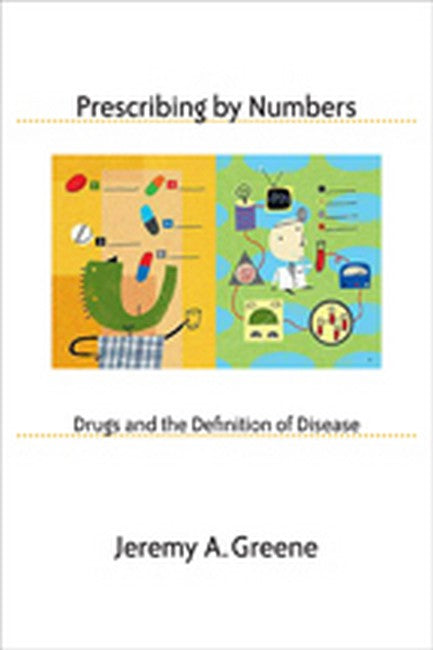The second half of the twentieth century witnessed the emergence of a new model of chronic diseasediagnosed on the basis of numerical deviations rather than symptoms and treated on a preventive basis before any overt signs of illness developthat arose in concert with a set of safe, effective, and highly marketable prescription drugs. In Prescribing by Numbers, physician-historian Jeremy A. Greene examines the mechanisms by which drugs and chronic disease categories define one another within medical research, clinical practice, and pharmaceutical marketing, and he explores how this interaction has profoundly altered the experience, politics, ethics, and economy of health in late-twentieth-century America. Prescribing by Numbers highlights the complex historical role of pharmaceuticals in the transformation of disease categories. Greene narrates the expanding definition of the three principal cardiovascular risk factorshypertension, diabetes, and high cholesteroleach intersecting with the career of a particular pharmaceutical agent. Drawing on documents from corporate archives and contemporary pharmaceutical marketing literature in concert with the clinical literature and the records of researchers, clinicians, and public health advocates, Greene produces a fascinating account of the expansion of the pharmaceutical treatment of chronic disease over the past fifty years. While acknowledging the influence of pharmaceutical marketing on physicians, Greene avoids demonizing drug companies. Rather, his provocative and comprehensive analysis sheds light on the increasing presence of the subjectively healthy but highly medicated individual in the American medical landscape, suggesting how historical analysis can help to address the problems inherent in the program of pharmaceutical prevention.Reviews''Greene provides suggestions on how to address some of the problems inherent in medical prevention.''Choice''Shows how the process of defining disease 'illustrates the porous relationship between the science and the marketing of health care.'''Nina C. Ayub, Chronicle of Higher Education''A gripping story . . . Greene warns us in his superb book that things are not always as they are claimed.''Howard Spiro, Yale Journal for Humanities in Medicine''This is, I believe, one of the best, and most significant, books published recently on the development of medical practice and the pharmaceutical industry in the USA in the second half of the twentieth century.''Judy Slinn, Social History of Medicine''Greene focuses on the question of how public health priorities became closely aligned with the pharmaceutical industry's marketing practices . . . Offers a nuanced description of the development of 'therapeutics of risk reduction' with multiple lines of influence, subtle power shifts, and gains and losses for patients and physicians.''Arthur Daemmrich, Chemical Heritage''Greene describes the relationship between advances in treatment, the incentives of manufacturers, and the effect on the public of increased attention to prevention . . . The risk-benefit trade-offs of the quantitative approach are complex, and Greene's historical revelations are timely.''Kevin A. Schulman, M.D. , New England Journal of Medicine''An insightful, engrossing exploration of how our notions of 'disease' have evolvedwith profound implications for understanding the health care of today and tomorrow.''Jerry Avorn, M.D, Professor of Medicine, Harvard Medical School, author of Powerful Medicines: The Benefits, Risks, and Costs of Prescription Drugs''What is remarkable about this book is not just the grace and assurance of Greene's writing, but the way Greene combines an insider's view of medical practice and pharmaceutical marketing with much broader social currents. It is an extraordinarily impressive work of scholarship.''Carl Elliott, M.D., Ph.D., University of Minnesota Center for Bioethics, author of Better than Well: American Medicine Meets the American Dream''Greene's historical account of our brave new world of drug-driven risk reduction is troubling and calls for some response. Both the scholarly depth and balanced tone of Prescribing by Numbers suggests that rather than simply rooting out bad actors and unethical practices, we must grapple with the very values and structural forces that are central to medical care and health today.''Robert Aronowitz, M.D., History and Sociology of Science Department, University of Pennsylvania''In a sophisticated and compelling account, Green explains how numerical values of physiological parameters became the basis for adjudicating between the normal and the pathological.''Bruno J. Strasser, Isis

